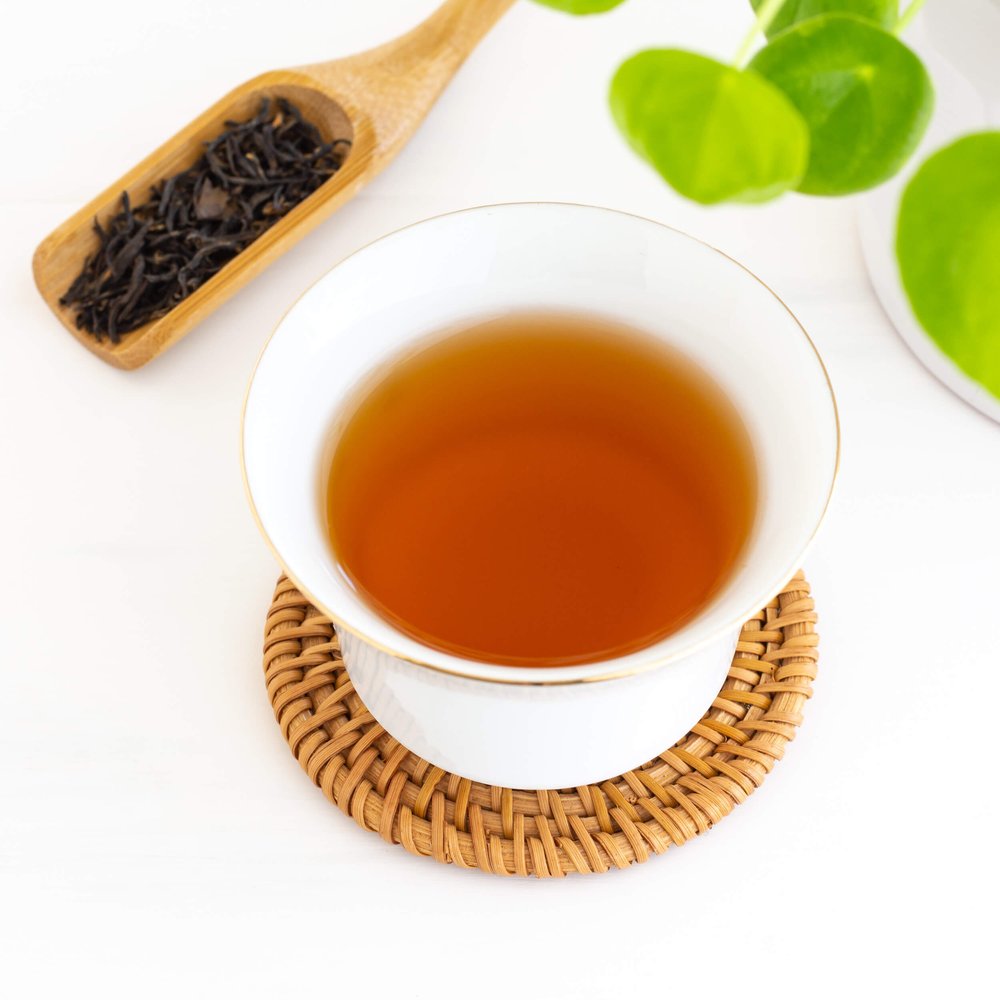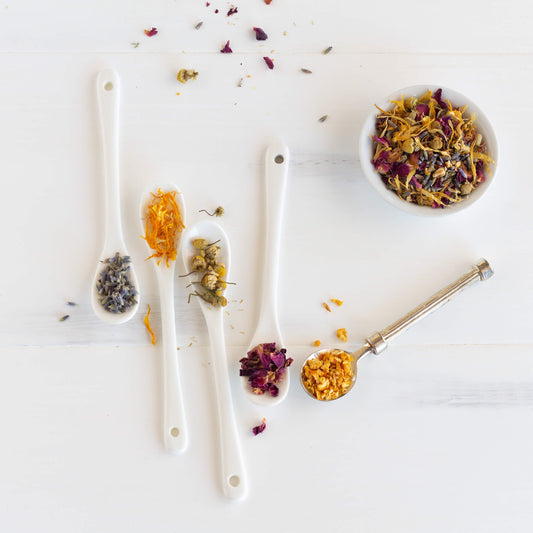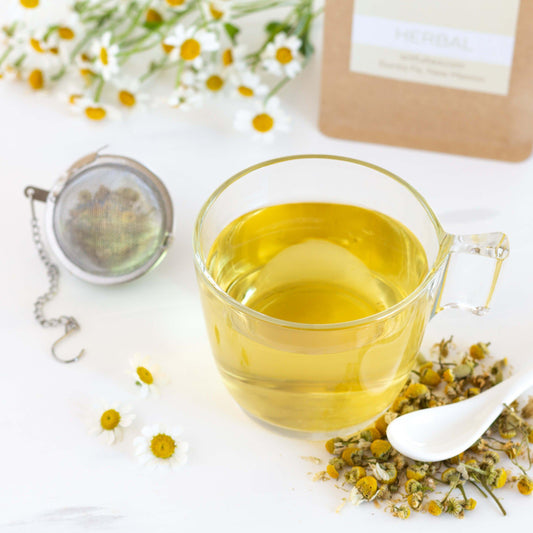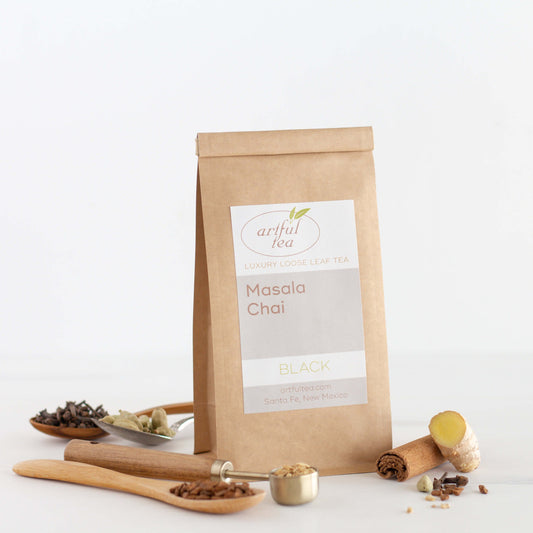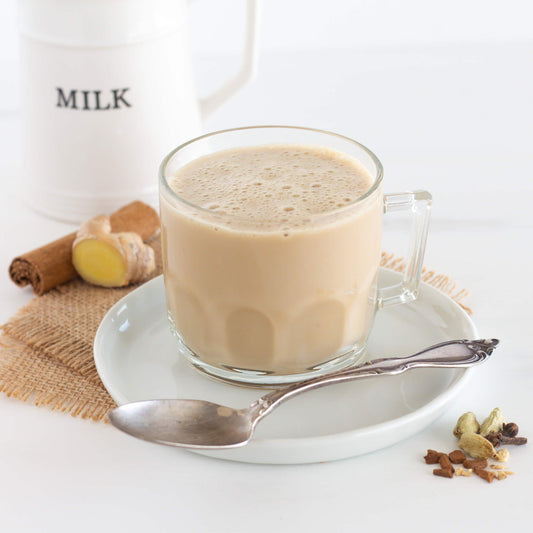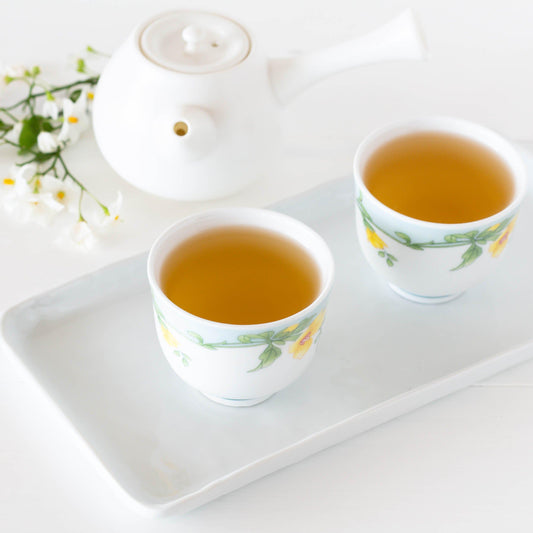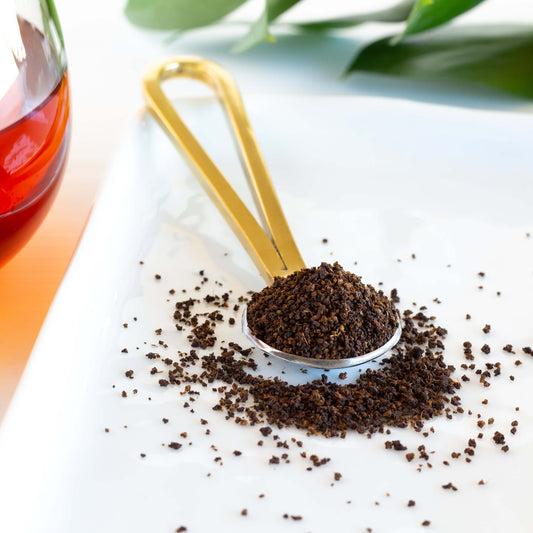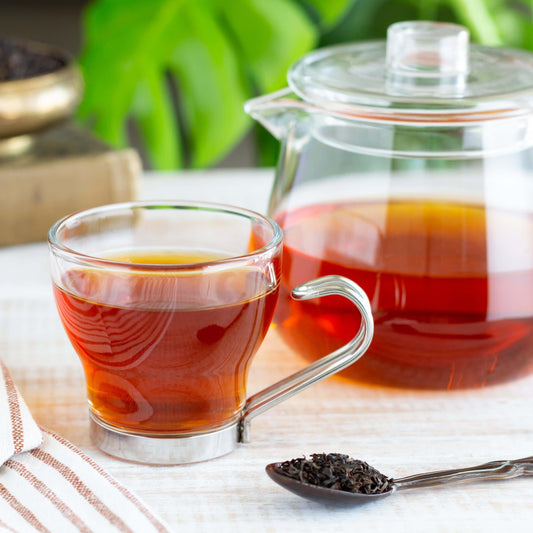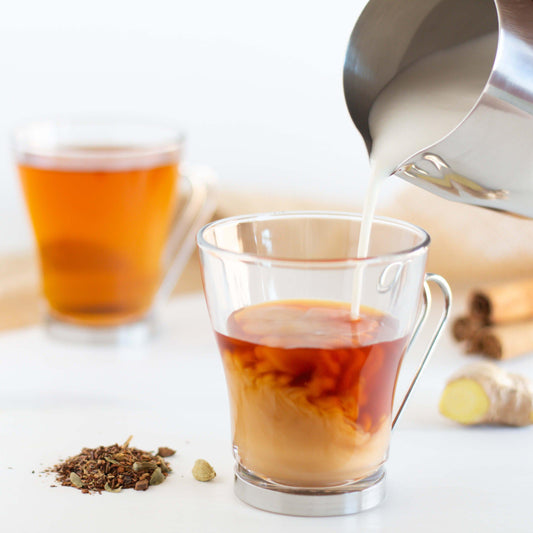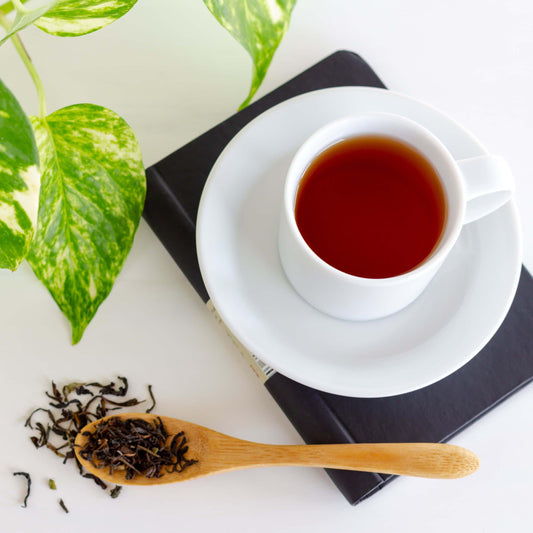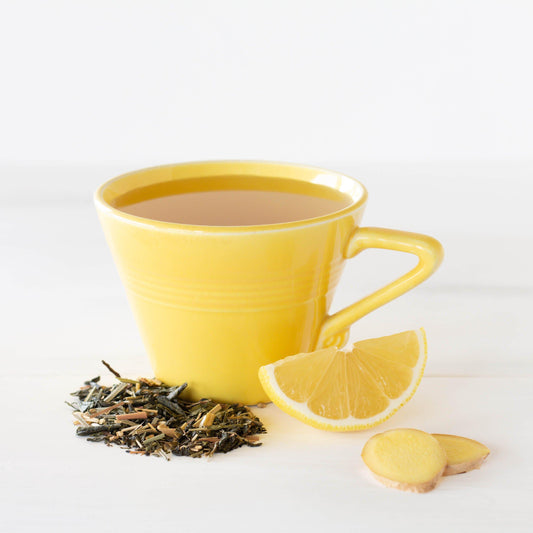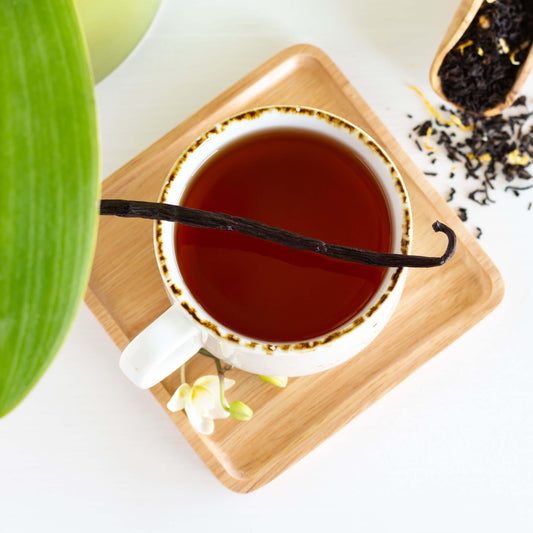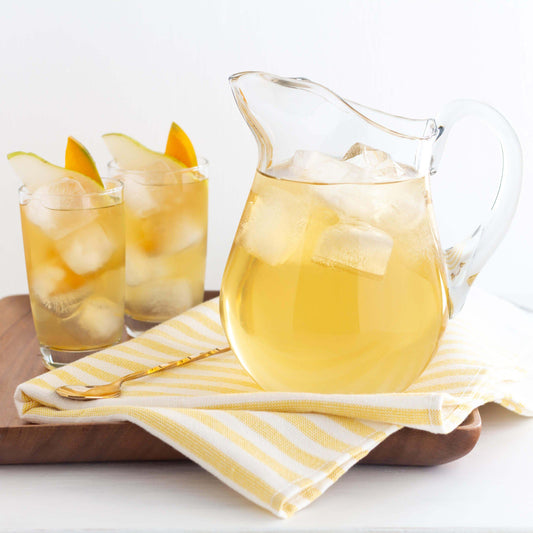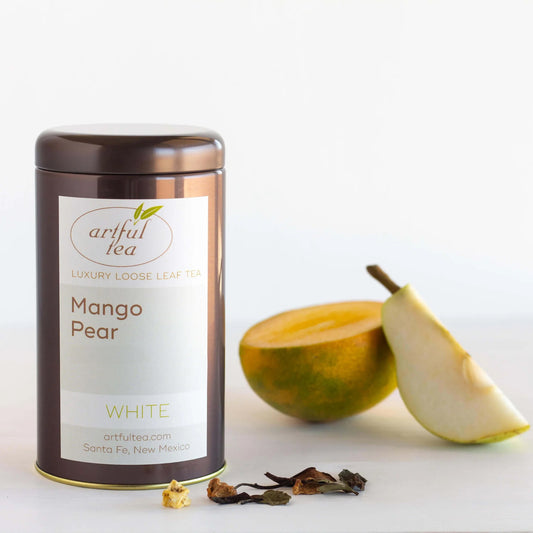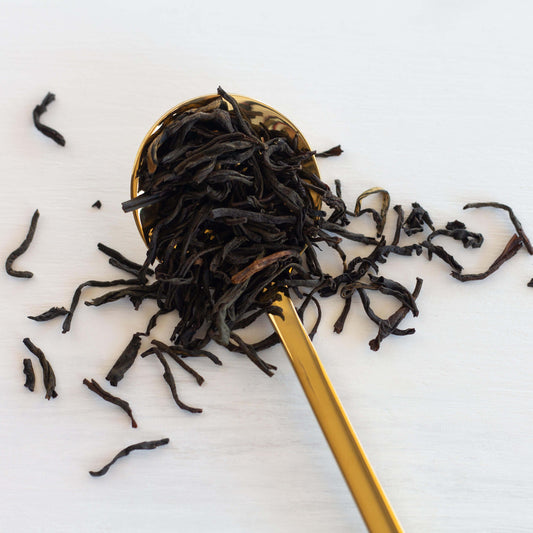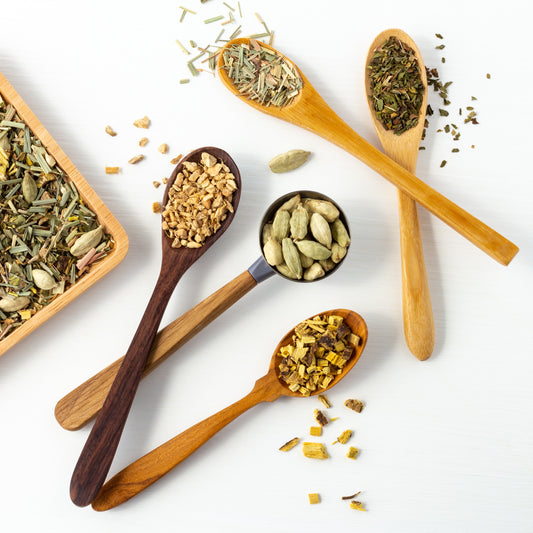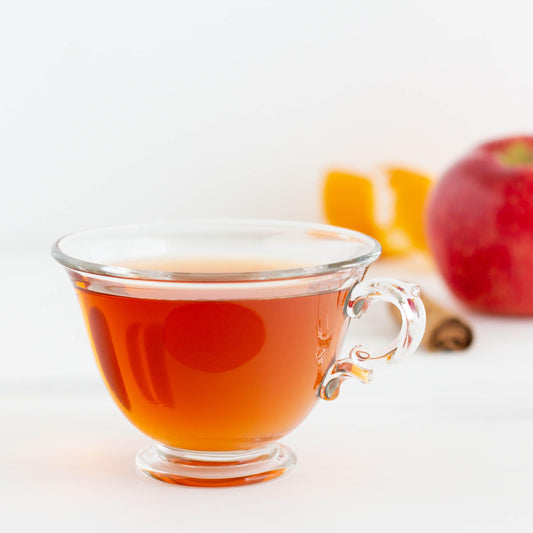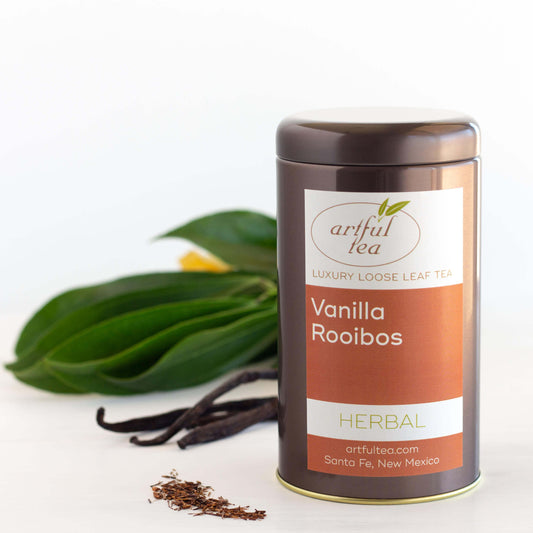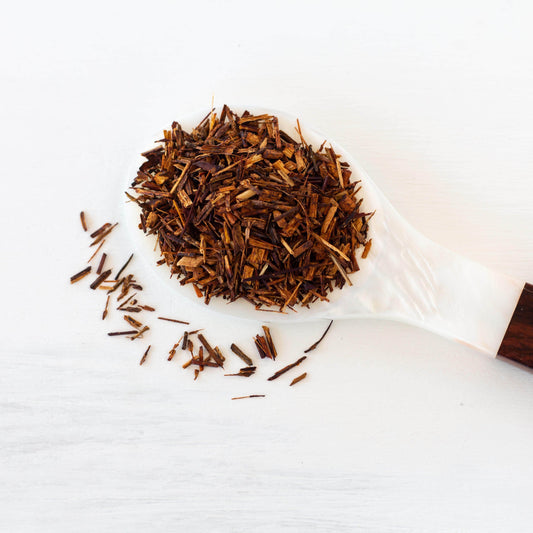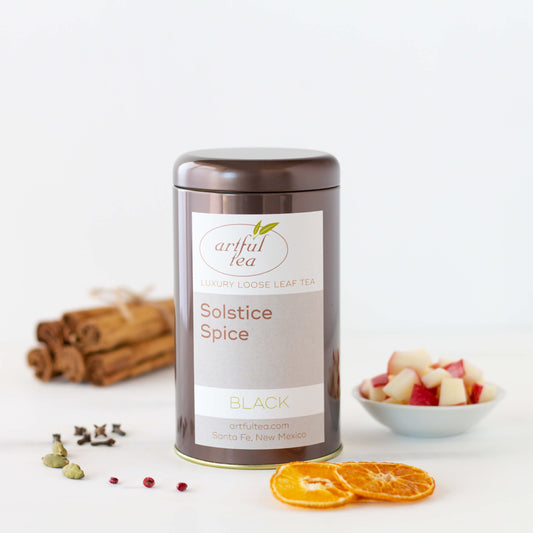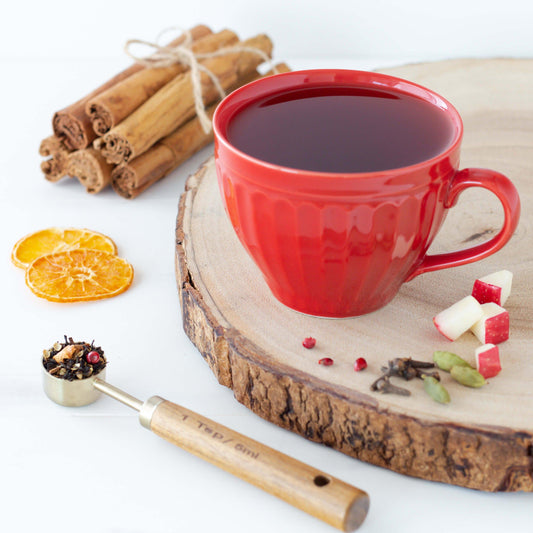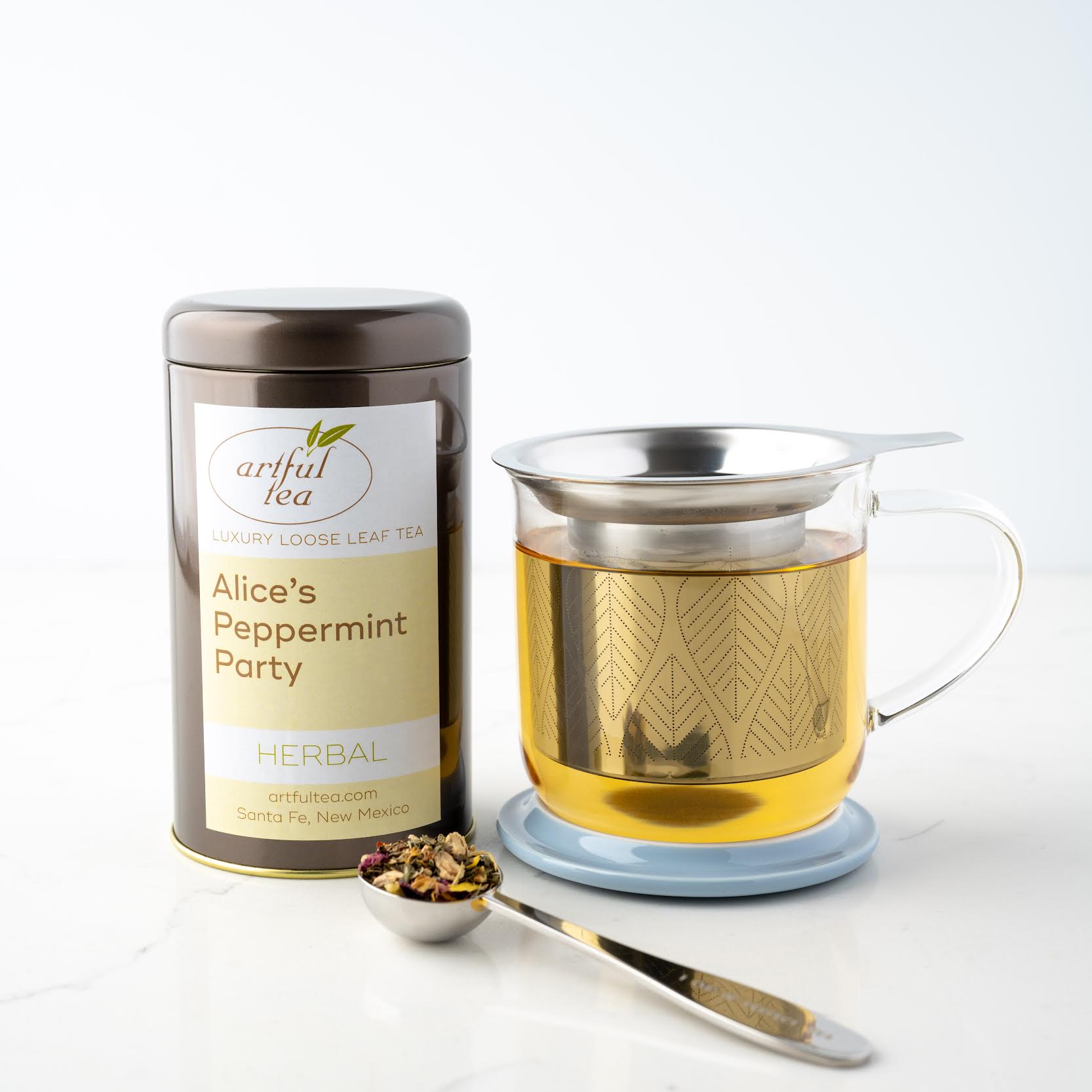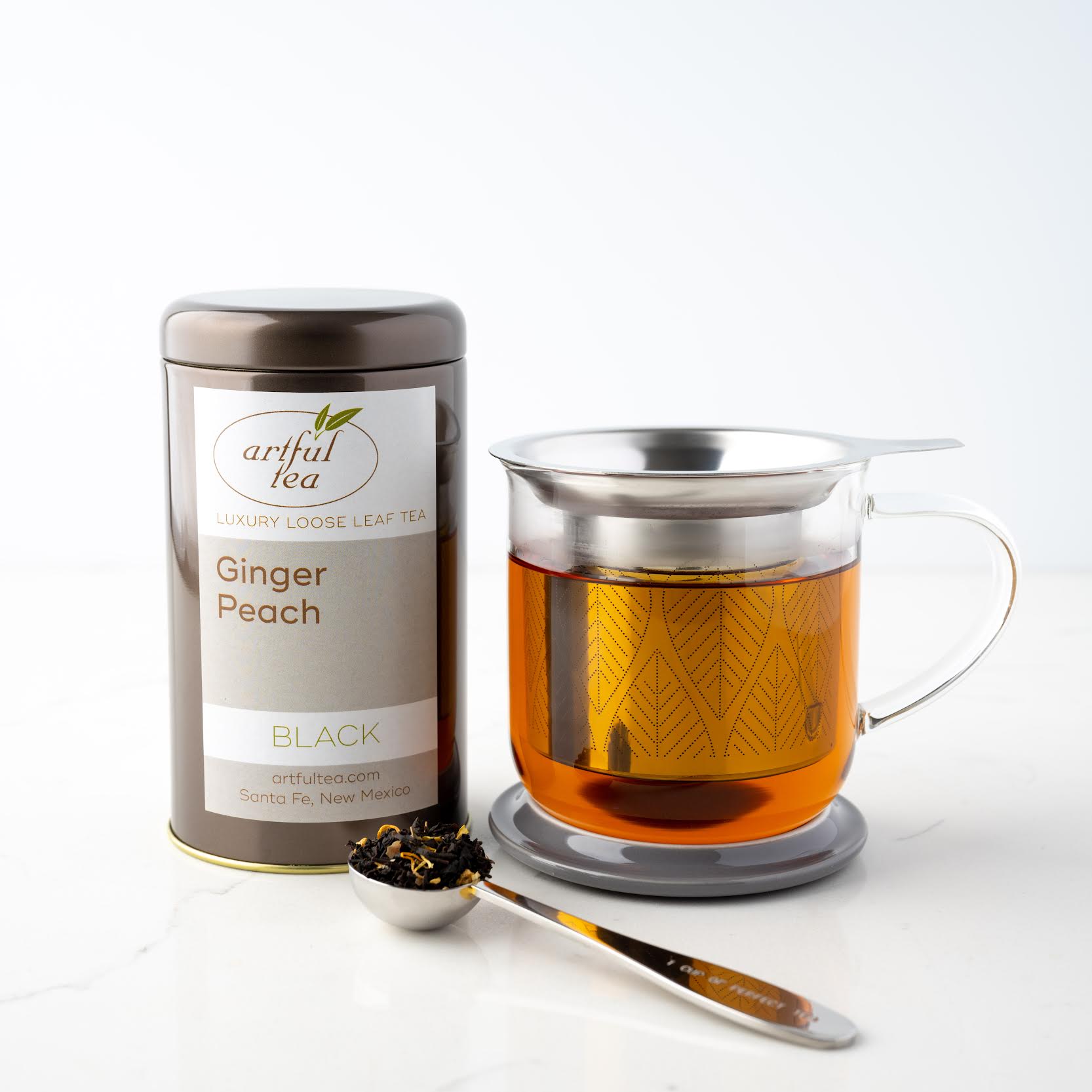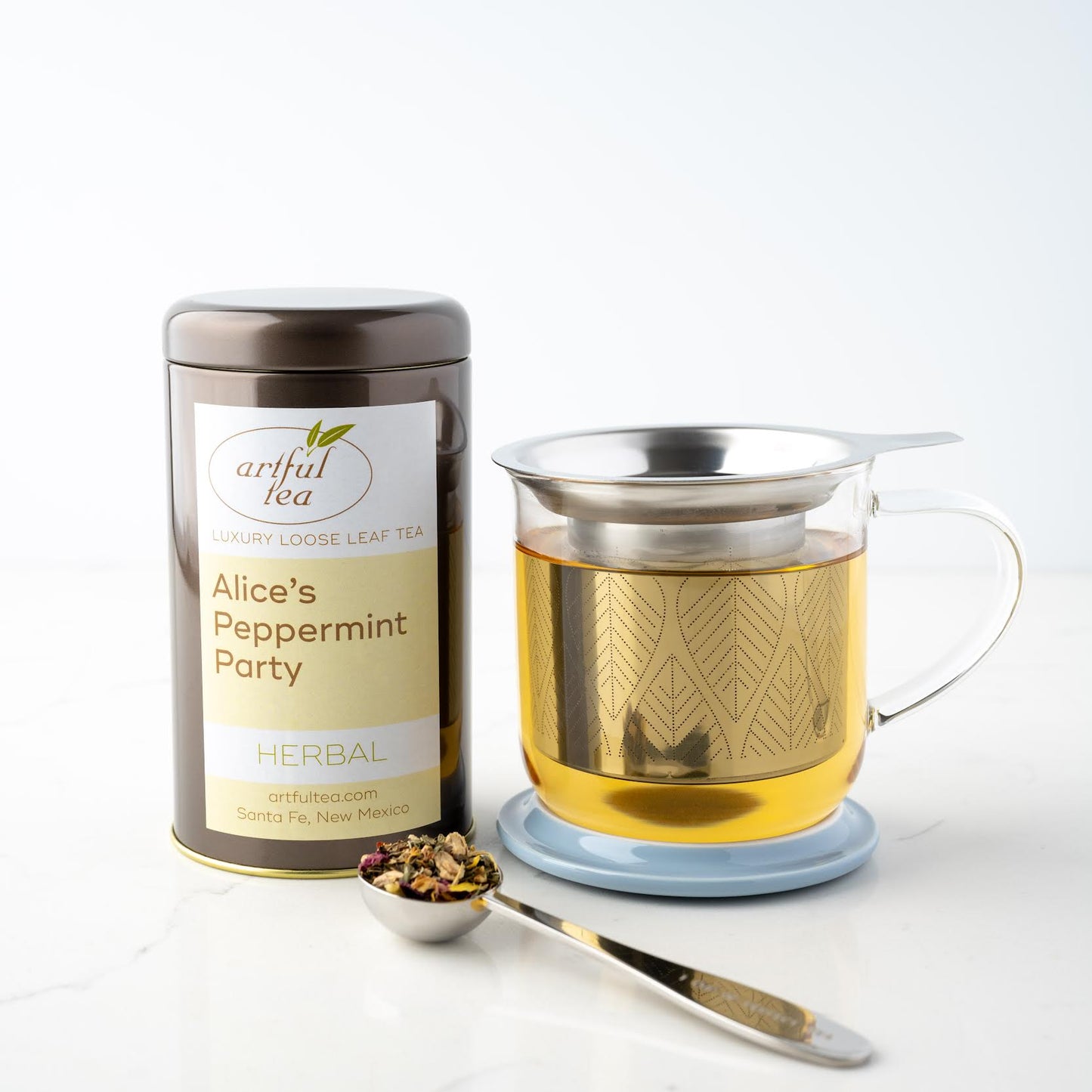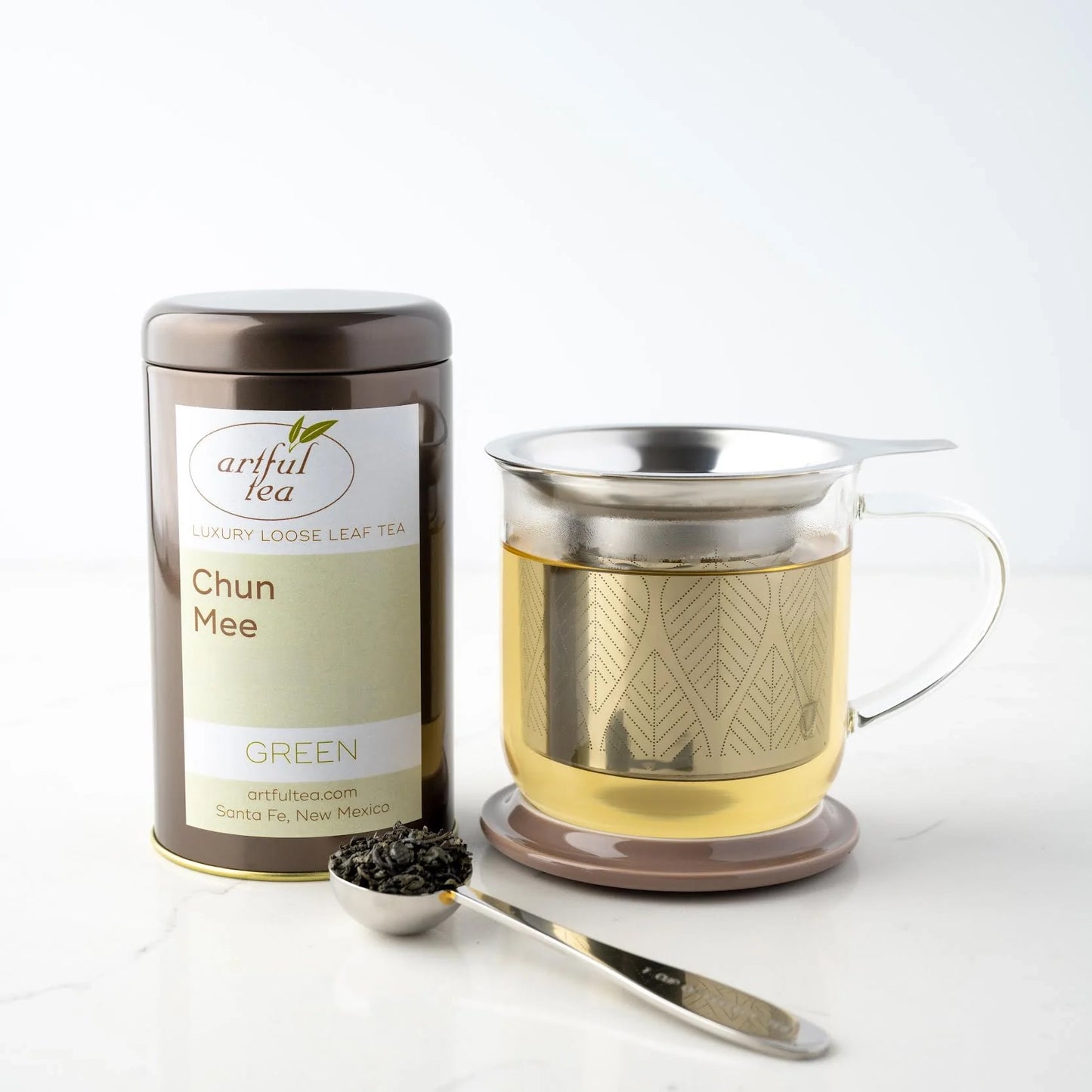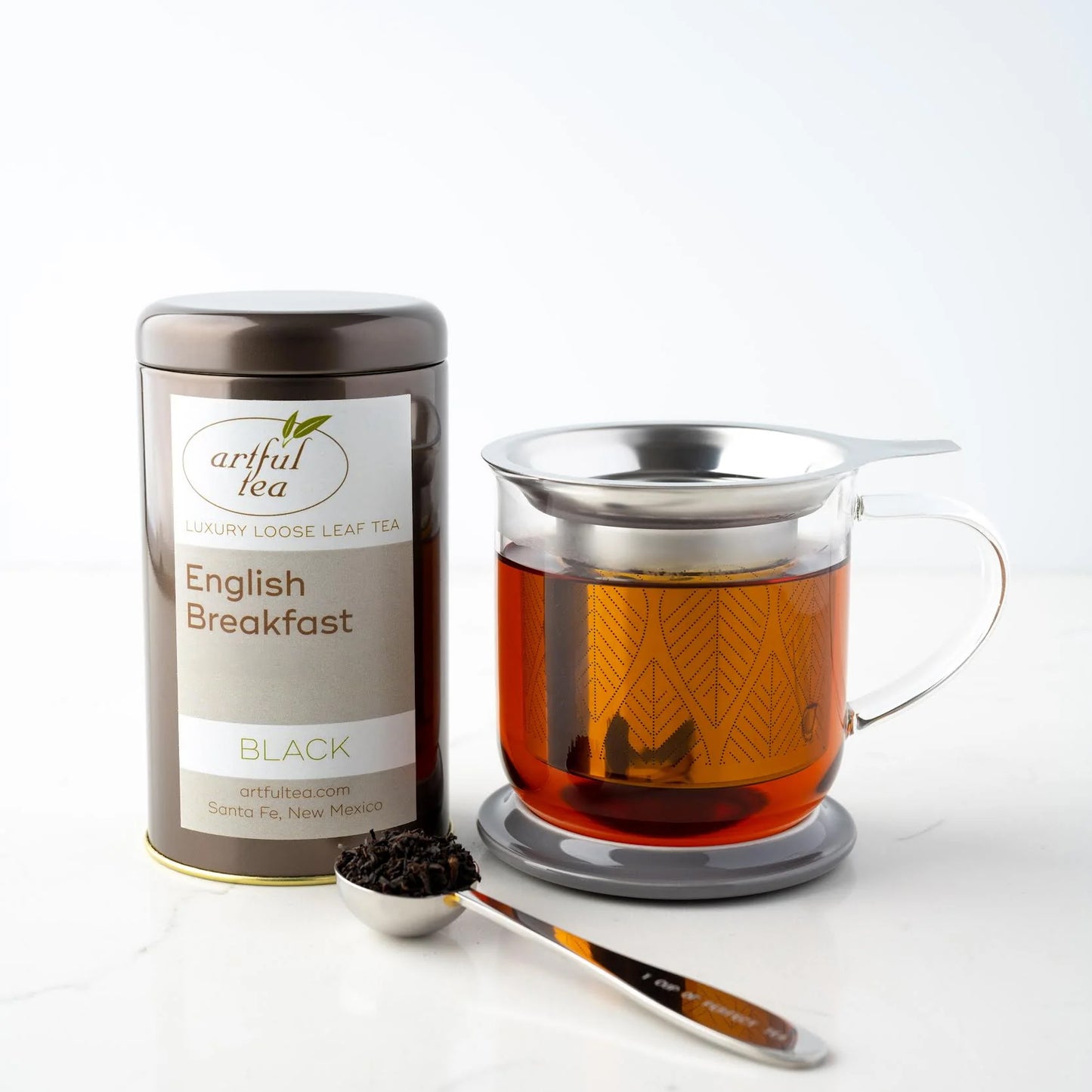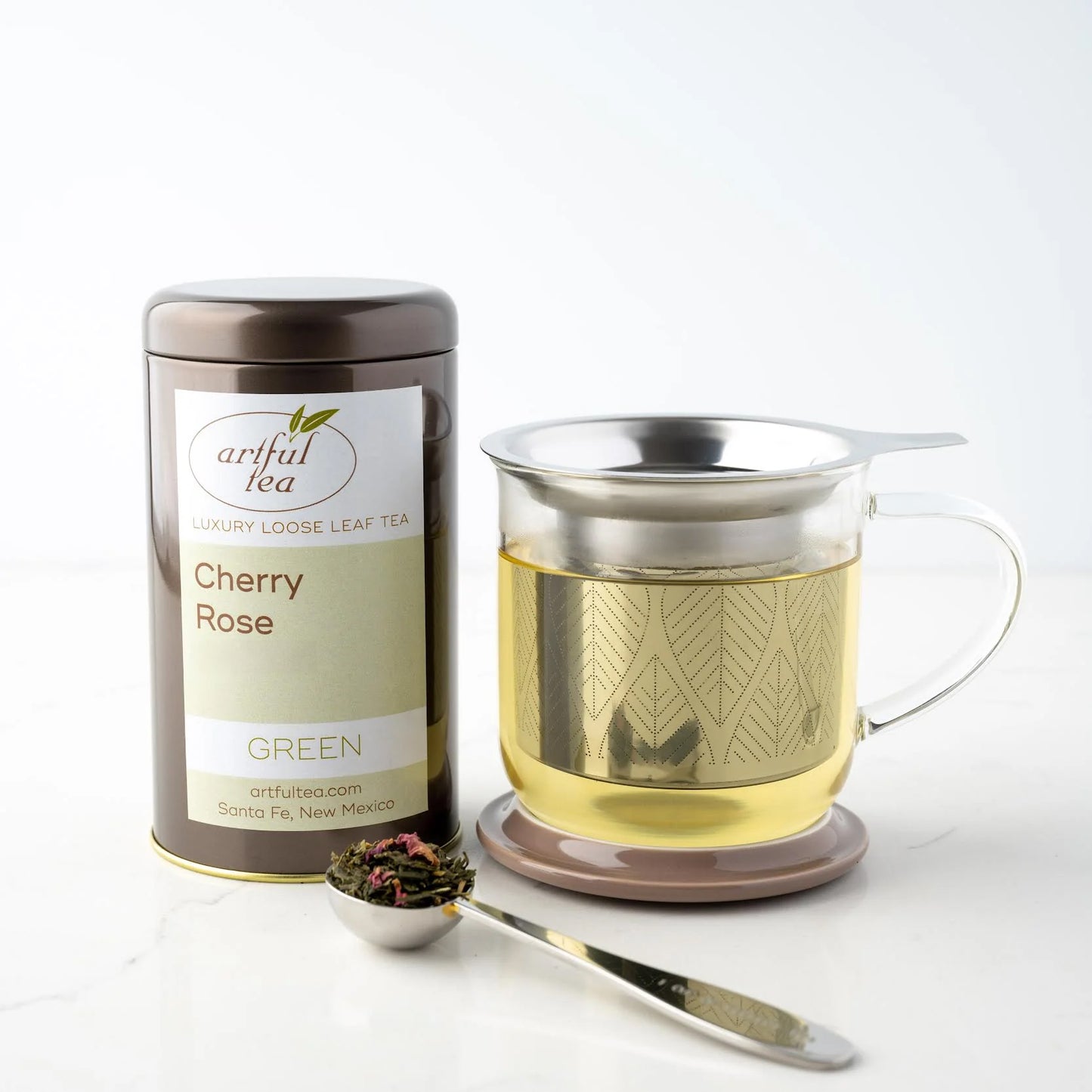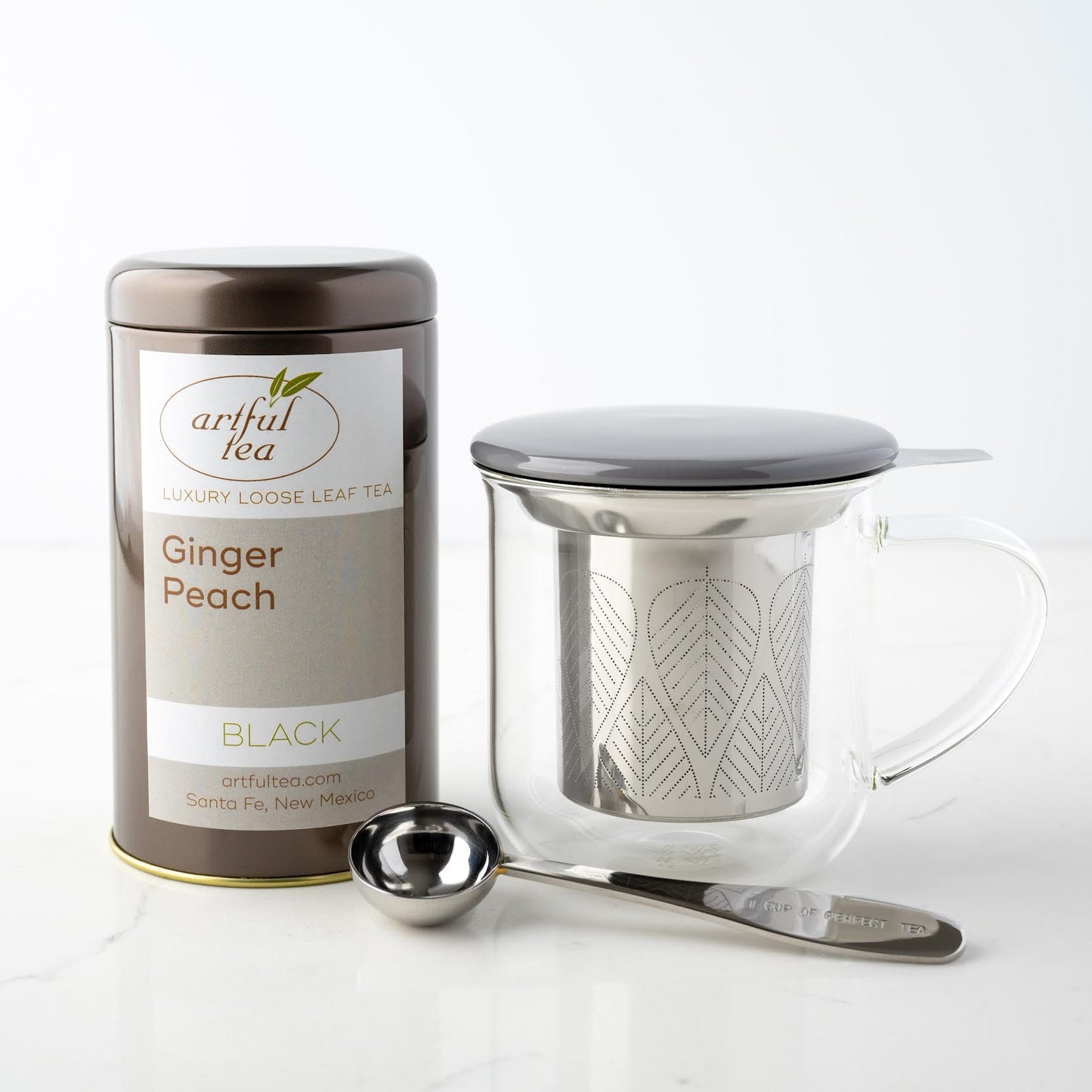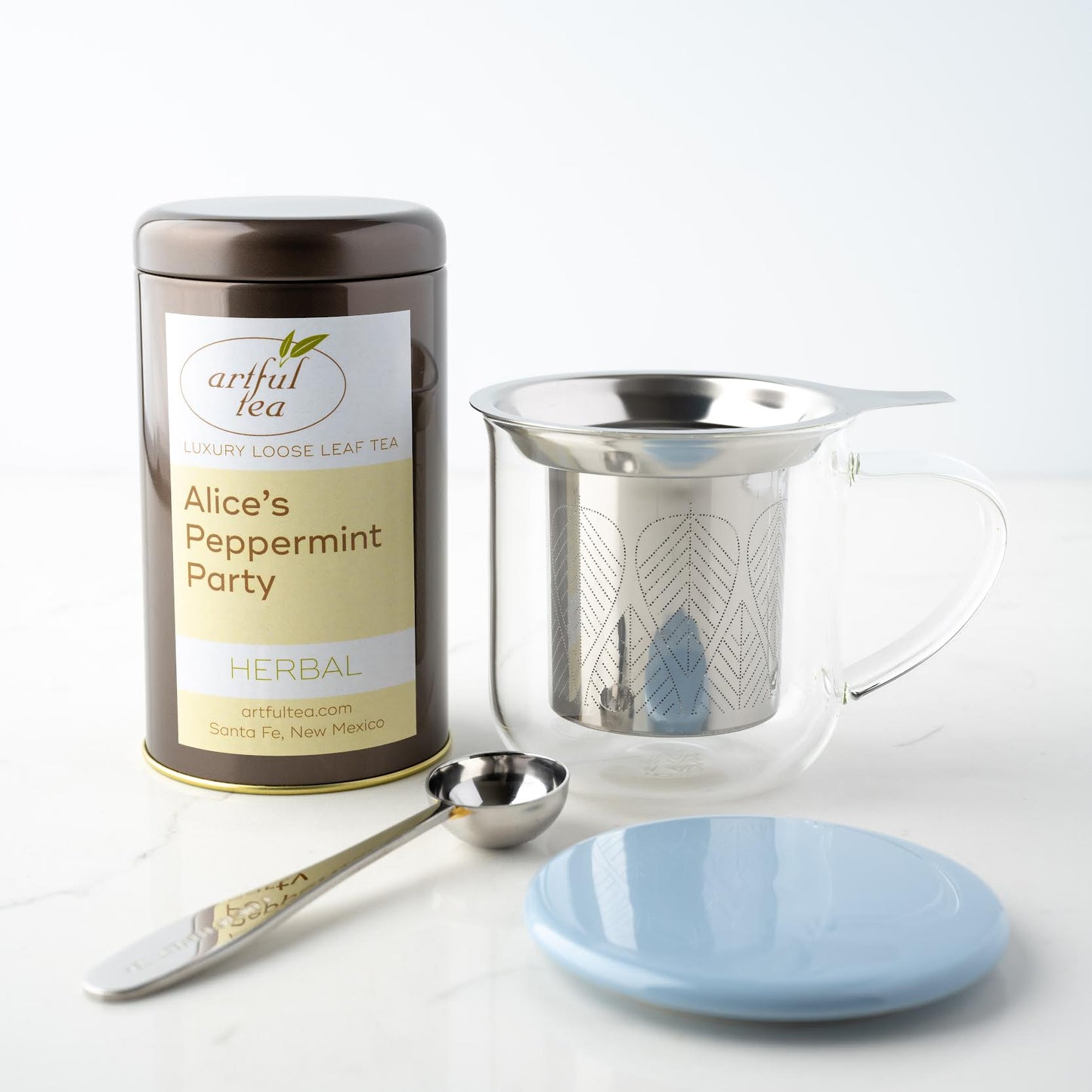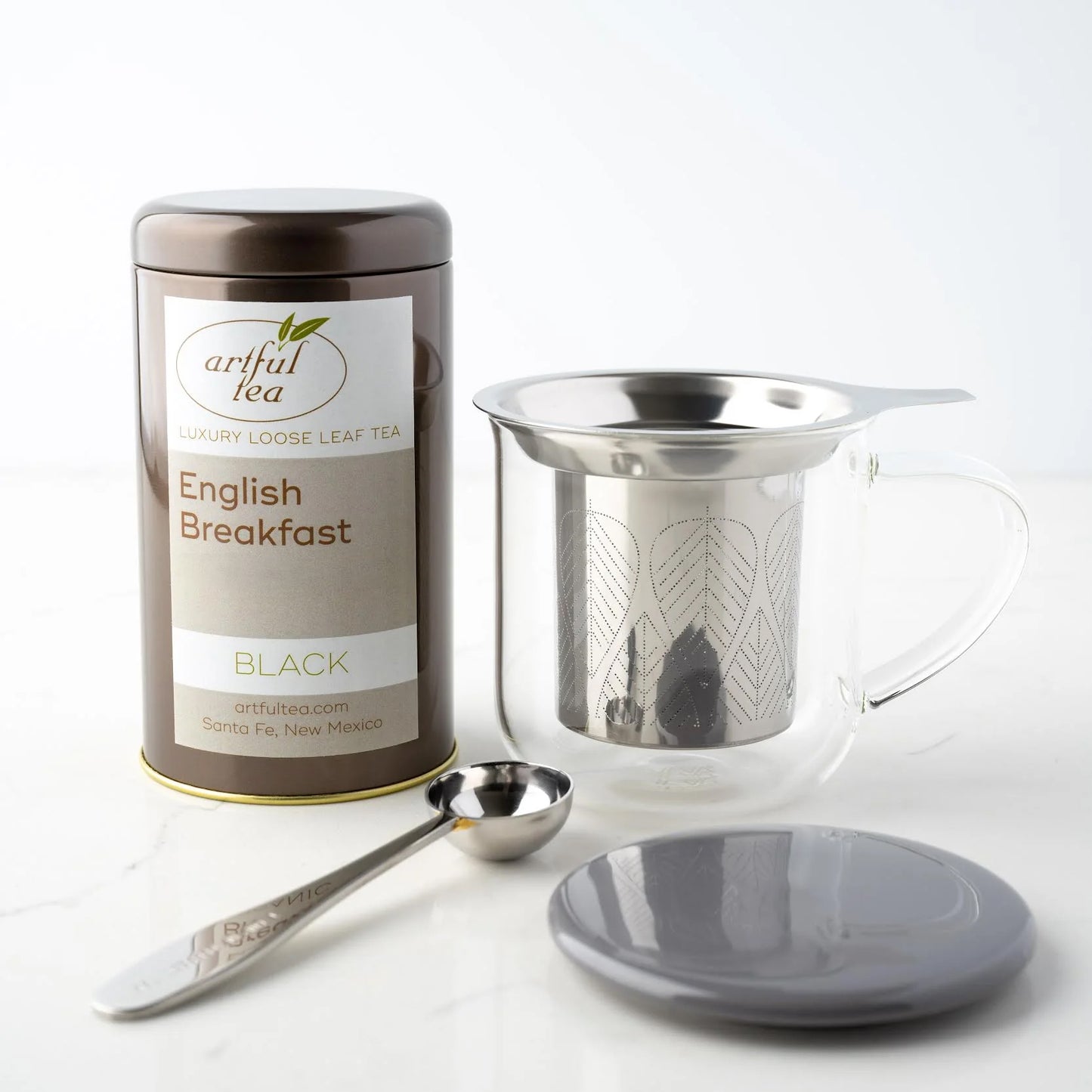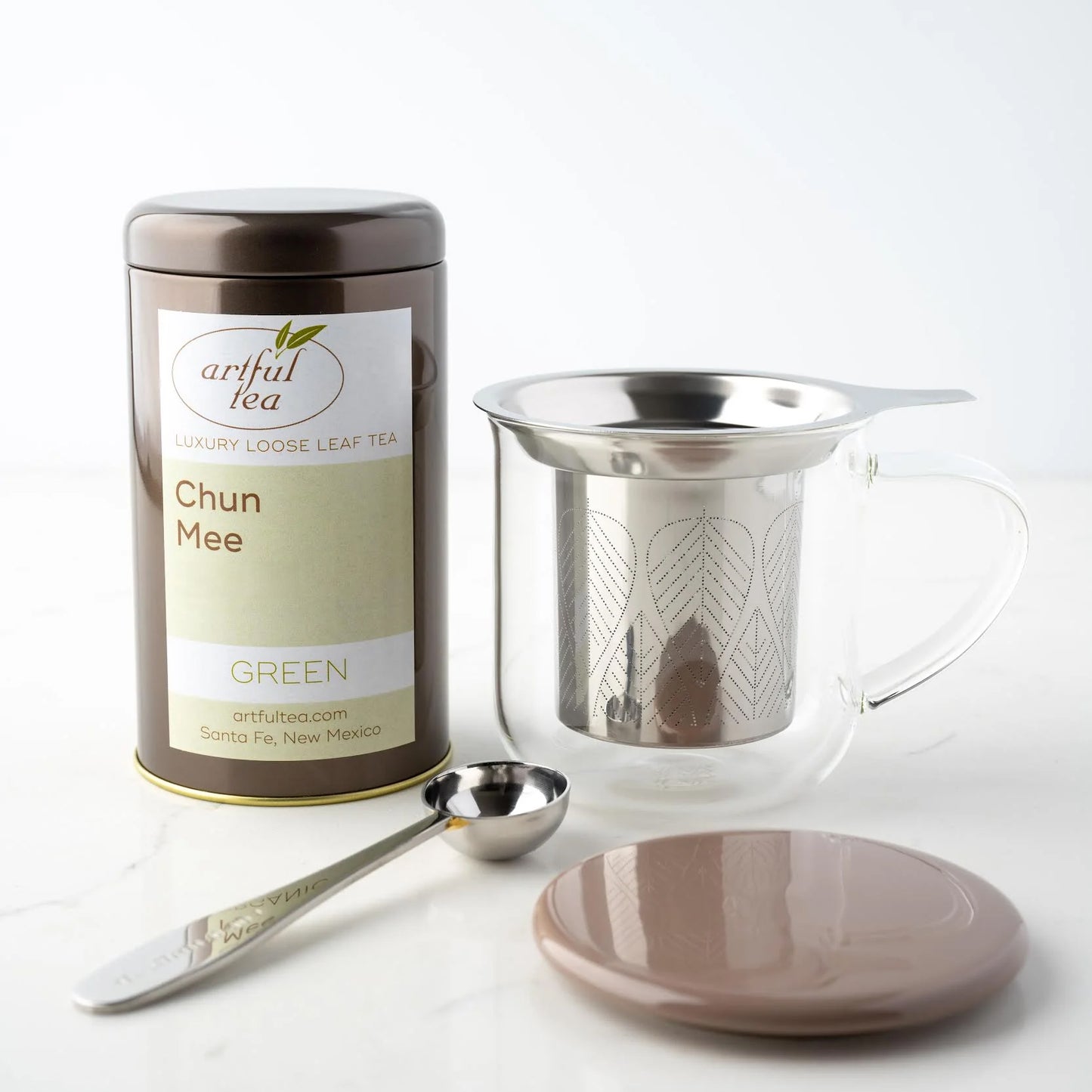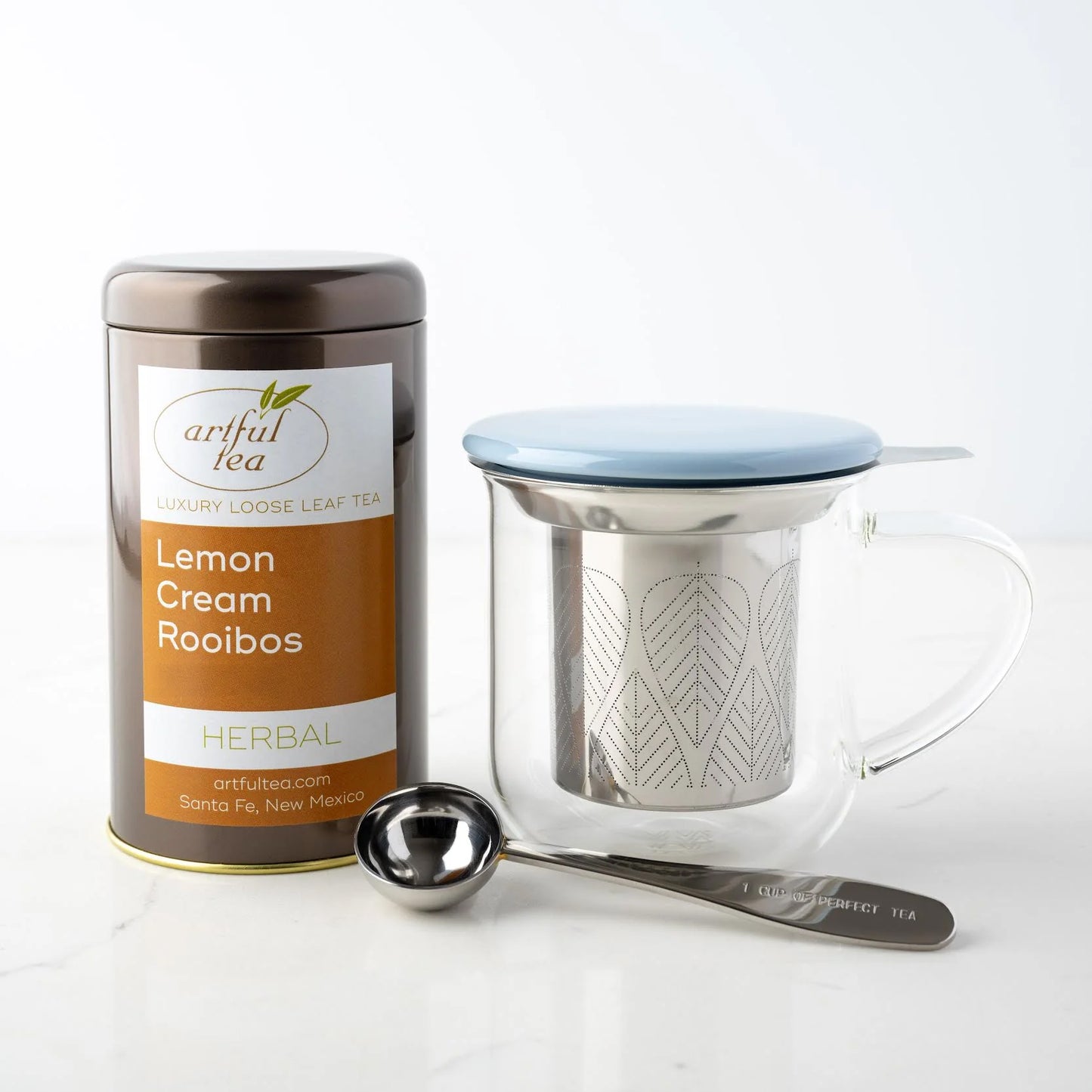Tea made from the camellia sinensis plant
All types of “true” tea actually originate from the same plant. The botanical name for the tea plant is camellia sinensis. This plant originated in southern China thousands of years ago, and has been cultivated and consumed for hundreds of years. Camellia sinensis has two main varietals: camellia sinensis var. sinensis, which grows primarily in China and other East Asian countries and has a milder, mellower character, and camellia sinensis var. assamica, which grows primarily in India and is generally heartier and more robust.
Black tea, green tea, white tea, oolong tea, pu-erh tea, and purple tea are all made from the camellia sinensis tea plant. Each of these teas develops its unique characteristics through different harvesting and processing methods. Some teas are steamed, some are pan-fired. Some are allowed to oxidize and some aren’t. Some tea leaves are hand-formed into tightly rolled balls, while other tea leaves are roughly chopped, or left to air-dry in their natural shape. Some teas are harvested in the first weeks of the spring season, while others are harvested in the summer and fall.
There are so many different factors that influence the appearance and flavor of tea, and specific tea processing methods have been developed over hundreds of years. Today, there are six main categories of tea, each with different signature characteristics and processing methods.
Black tea
Many people new to the world of tea are most familiar with black tea. You can find black tea in name-brand teabags at the grocery store like Lipton or Tetley. Popular breakfast blends like English Breakfast and Irish Breakfast are other examples of black tea. Black teas tend to be relatively high in caffeine, with about half as much caffeine as a cup of coffee. They brew up a dark, coppery color, and usually have a stronger, more robust flavor than other types of tea.
How black tea is made
To produce black tea, tea leaves are harvested, wilted, and then lightly crushed. Some types of black tea, such as Irish Breakfast, are broken up into even smaller pieces using a method known as crush-tear-curl, or CTC. The tea leaves are then fully oxidized, which turns them a brownish-black color.
Where black tea is from
Black tea is primarily produced in China and India. Other up-and-coming tea-producing countries that export black tea include Sri Lanka, Nepal, Vietnam, and Kenya. In general, Indian black teas tend to be stronger and more robust, and are often used in hearty breakfast blends that stand up well to the addition of milk and sweetener. Many types of Indian black tea are categorized using a special system of tea grading in order to denote their quality.
Chinese black teas tend to be lighter and mellower, and are usually consumed on their own without the addition of milk or sweetener. They often contain slightly less caffeine than Indian black teas. Popular Chinese black teas include China Keemun and Golden Yunnan.
Green tea
Green tea is another type of tea made from the camellia sinensis plant. Green teas often brew up a light green or yellow color, and tend to have a lighter body and milder taste. They contain about half as much caffeine as black tea (about a quarter that of a cup of coffee.) Popular green teas include Gunpowder, Jasmine Yin Cloud, and Moroccan Mint.
How green tea is made
Green tea is harvested and then immediately either steamed or pan-fired in order to halt the oxidation process. Stopping oxidation soon after harvest is what gives green tea leaves their bright green color and their light, vegetal taste. The tea leaves are then rolled or pressed into their final shape and dried.
Where green tea is from
Green tea is primarily produced in China and Japan. Japanese green teas are steamed soon after harvest in order to halt oxidation. They tend to have a slightly savory, oceanic quality, and brew up a light emerald green. Japanese teas are sometimes also shaded for several weeks prior to harvest, which increases their levels of chlorophyll, caffeine, and l-theanine. Popular Japanese green teas include Sencha, Kukicha, and Gyokuro.
Chinese green teas are usually pan-fired after harvest in order to stop the oxidation process. These teas tend to be milder than Japanese green teas, and brew up a soft golden color, with a light body and a mellow flavor. Popular Chinese green teas include Dragon Well, Gunpowder, and Chun Mee.
White tea
White tea is a delicate, minimally processed tea that is highly sought after by connoisseurs and enjoyed by experts and novices alike. White tea has a light body and a mild flavor with a crisp, clean finish. White tea tends to be very low in caffeine, although some silver tip teas may be slightly higher in caffeine.
How white tea is made
White tea is minimally processed before being dried and packaged. In some cases, as with silver tip and silver needle teas, white tea is harvested from the very first tips and buds of the tea plant, before they open to form full leaves. Other white teas, like White Peony, are harvested after the leaves unfurl and grow. In both cases, white teas experience minimal amounts of oxidation.
Where white tea is from
White tea is primarily produced in China, particularly in the Fujian province, where it has a rich history. Some specialty white teas are also produced in counties like Nepal, Taiwan, and Sri Lanka.
Oolong tea
Oolong is a partially oxidized tea, placing it somewhere in between black and green teas in terms of oxidation. Oolong teas can range from around 10-80% oxidation, and can brew up anywhere from a pale yellow to a rich amber cup of tea. Many oolongs can be re-infused many times, with subtle differences and nuances of flavor in each successive cup.
How oolong tea is made
Many types of oolong teas, such as Milk Oolong, are grown from special varietals of the tea plant cultivated for many years in order to impart unique flavors to the tea. Oolong teas are harvested, wilted, and then undergo partial oxidation. Depending on the type of oolong, they may be oxidized for only a short period of time, or may undergo more thorough oxidation almost to the level of a black tea. Some oolong teas are then shaped by hand into small, tightly rolled balls before being dried and packaged.
Where oolong tea is from
Oolong teas are primarily produced in China and Taiwan. In China, oolong-producing regions include the Wuyi Mountains and Anxi, both in Fujian province, and Guangdong province. Taiwan, a small island off of mainland China, is famed for its specialty oolongs, including the highly sought after Milk Oolong.
Pu-erh tea
Pu-erh tea is an aged, partially fermented tea that is similar to black tea in character. Pu-erh teas brew up an inky brown-black color and have a full body with a rich, earthy, and deeply satisfying taste. Pu-erh teas are fairly high in caffeine, containing about the same amount as black tea (half that of a cup of coffee.)
How pu-erh tea is made
Pu-erh is initially processed in a way similar to green tea. Leaves are harvested, steamed or pan-fired to halt oxidation, and then shaped and dried. After the leaves dry, they then undergo a fermentation process. Sheng pu-erh is produced using a traditional method, where tea leaves are aged using a longer and more gradual process. Shou pu-erh is produced using a modern, accelerated fermentation method. Both types of pu-erh are often aged for several years, as the rich and earthy flavors of the tea often improve over time. The pu-erh teas we carry are aged for about three years.
Where pu-erh tea is from
Pu-erh originated in the city of Pu-erh in the Yunnan province of China, and is still primarily produced in the same region today. Like other types of specialty foods, such as champagne or parmesan, only teas produced in Yunnan province can officially be called pu-erh. However, other provinces including Hunan and Guangdong provinces also produce similar aged teas.
Purple tea
Purple tea is a relatively new kind of tea, and has only been commercially available for a few years. The tea is produced from a rare purple-leaved tea plant found growing wild in the Assam region of India. Today, purple teas are primarily produced in Kenya, Africa. They have a light body and mellow flavor, and are extremely low in caffeine and high in antioxidants and anthocyanins.
How purple tea is made
Purple tea is usually produced in a manner similar to oolong teas. The leaves are harvested, wilted, and undergo partial oxidation before being shaped and dried. When brewed, purple tea brews up a light reddish-purple, thanks to the unique color of its leaves.
Where purple tea is from
Purple tea was originally found growing wild in the Assam region of India. After their initial discovery, these unique tea plants were later taken to Kenya, where the Tea Research Foundation of Kenya worked to create a cultivar that would be ideal for commercial tea production. The third-largest producer of commercial tea after China and India, Kenya now leads as the largest producer of purple tea. Our purple teas come from the Tumoi Tea Garden in the Nandi Hills of Kenya.
Matcha
Matcha is a type of powdered green tea popular in Japan. It can be consumed on its own when whisked with water, and can also be added to lattes, smoothies, and baked goods. Matcha has a smooth, rich flavor with notes of umami and just a hint of bitterness.
How matcha is made
Matcha is produced from special tea plants that are shaded for at least three weeks prior to harvest. The shading process increases the chlorophyll in the plants, which gives them a deep emerald green color. It also increases the caffeine and l-theanine present in the tea and contributes to the unique umami flavor of the tea. The leaves are steamed immediately after harvest in order to halt the oxidation process. When the leaves are shaped and dried like a typical green tea, they are known as Gyokuro. To make matcha, these leaves are stone-ground into a very fine powder.
Where matcha is from
Powdered green tea was first produced in China during the Tang Dynasty. In the 12th century, Chinese monks brought both Buddhism and matcha to Japan. The ritualized use of matcha by Japanese monks grew quickly, and by the 15th century, its popularity had spread to Japan’s upper classes. Over centuries, an intricate tea ceremony surrounding matcha was developed. Today, matcha is primarily associated with Japan, and has a rich history and cultural significance within the country.
Mate tea
Mate is a tea-like drink made from a plant native to South America. Although mate is not related to the camellia sinensis tea plant, it does contain caffeine. Mate is traditionally prepared in a hollow gourd by adding leaves and hot water to the gourd to steep. The tea is then consumed through a filtered straw known as a bombilla. In many South American countries, mate is shared among a group of friends by drinking and refilling the same gourd as it is passed from person to person. Mate can also be prepared in the same way as other teas and tisanes, by steeping the leaves in an infuser or filter in a mug or pot.
Herbal tea
Although we colloquially call herbal teas “tea,” they’re not actually related to true teas made from the camellia sinensis plant. Instead, herbal teas are composed of a blend of different herbs and spices. In general, herbal teas contain no caffeine. There are a wide variety of different kinds of herbal teas, including both single-ingredient teas like Peppermint and Chamomile, as well as creative blends like Lavender Lullaby and Atomic Gold.
Herbal teas are also sometimes called herbal infusions or tisanes. Popular herbal tea ingredients include peppermint, chamomile, hibiscus, ginger, lavender, and more. Herbal blends often have medicinal properties, and depending on the blend can be used to treat everything from sore throats to upset stomachs.
Rooibos teas
Rooibos is a particular type of herbal tea made from a plant native to South Africa. These teas are sometimes also referred to as red tea or red bush tea, and are naturally caffeine free. Rooibos has a full body similar to that of a black tea, which makes it a good option for people who enjoy black tea but are looking to avoid caffeine. It has a pleasant natural sweetness, and is delicious when taken on its own or with a splash of milk. Rooibos can also be mixed with other ingredients to create flavored blends like Earl Grey Rooibos and Rooibos Chai.
Understanding tea categories
When it comes to tea, there are a few basic categories that make it easier to understand how a tea is processed and what it will taste like when brewed. Beyond theses categories, however, there is a vast array of different tea varietals, growing conditions, and processing methods. Even when using the same varietal of tea and similar growing and processing conditions, teas grown in different locations will develop different characteristics thanks to the unique terroir of their environment.
Ultimately, there are as many different types of tea as there are tea producers. Whether you’re just beginning to learn more about tea or are a dedicated tea drinker, there are always new and interesting single-origin teas and tea blends to appreciate!
